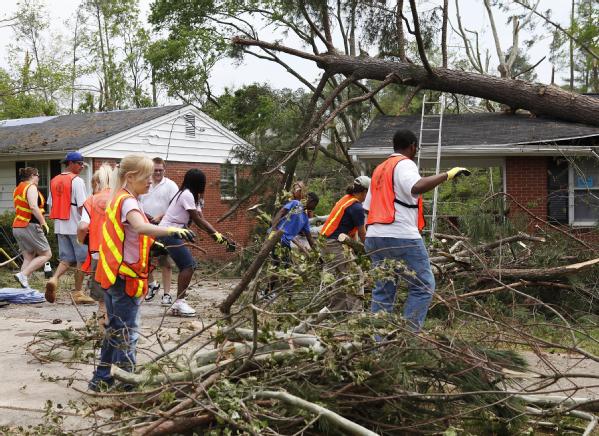Since the deadly tornadoes first struck parts of the country earlier this week, the federal government has been in constant contact with all of the impacted states as they responded to and began recovery efforts from these devastating storms.
At the request of the respective governors, FEMA currently has personnel on the ground in Alabama, Georgia, Mississippi, Kentucky, Tennessee and Virginia, and commodities strategically pre-positioned in the region to support the states.
President Obama joined Administrator Fugate, the Governor and other state and local officials on the ground in Alabama yesterday.
On Sunday, Department of Homeland Security Secretary Napolitano, Housing and Urban Development Secretary Donovan, Agriculture Secretary Vilsack, Small Business Administrator Mills, and FEMA Administrator Fugate will travel to Alabama and Mississippi to survey the damage and meet with state and local officials.
Recap for Friday, April 29th
- An Incident Management Assistance Team (IMAT) is on the ground in Kentucky and an additional Incident Management Assistance Team (IMAT) arrived in Mississippi, IMATs are also on the ground in Alabama and in Georgia to assist in the coordination efforts as the states continue to respond and begin to recover from this devastating storm outbreak.
- FEMA Community Relations (CR) teams are on the ground in Georgia and Alabama to meeting with disaster survivors to explain the assistance available and to help survivors register for assistance. Additional CR teams have been deployed to Alabama, Georgia and Mississippi.
- FEMA partnered with the Alabama Emergency Management Agency to create a joint Facebook page as an additional way to reach Alabama residents during the response and recovery efforts after the severe storms and tornadoes.
- A housing mission planning team is on the ground in Alabama to support the state in meeting its objectives. This team, comprised of housing and technical experts from FEMA, Housing and Urban Development (HUD), Army Corps of Engineers, Small Business Administration and voluntary agencies, will assist the state-led housing task force in establishing housing priorities; seeking ways to maximize housing resources, such as apartments and rental units; and other resources, if needed.
- U.S. Housing and Urban Development Secretary Shaun Donovan today announced HUD will speed federal disaster assistance to Alabama and provide support to homeowners and low-income renters forced from their homes following severe storms, tornadoes, straight-line winds, and flooding this week.
- Agriculture Secretary Tom Vilsack today announced that USDA's Natural Resources Conservation Service (NRCS) has made immediately available $6 million in Emergency Watershed Protection (EWP) Program aid for disaster recovery projects in 10 states affected this month by storms and floods.
- The American Red Cross, Salvation Army, Southern Baptists and other voluntary and faith-based organizations are also providing meals, shelter and other relief supplies. More than 90 American Red Cross response vehicles are fanning out through the affected areas distributing meals and relief supplies.









